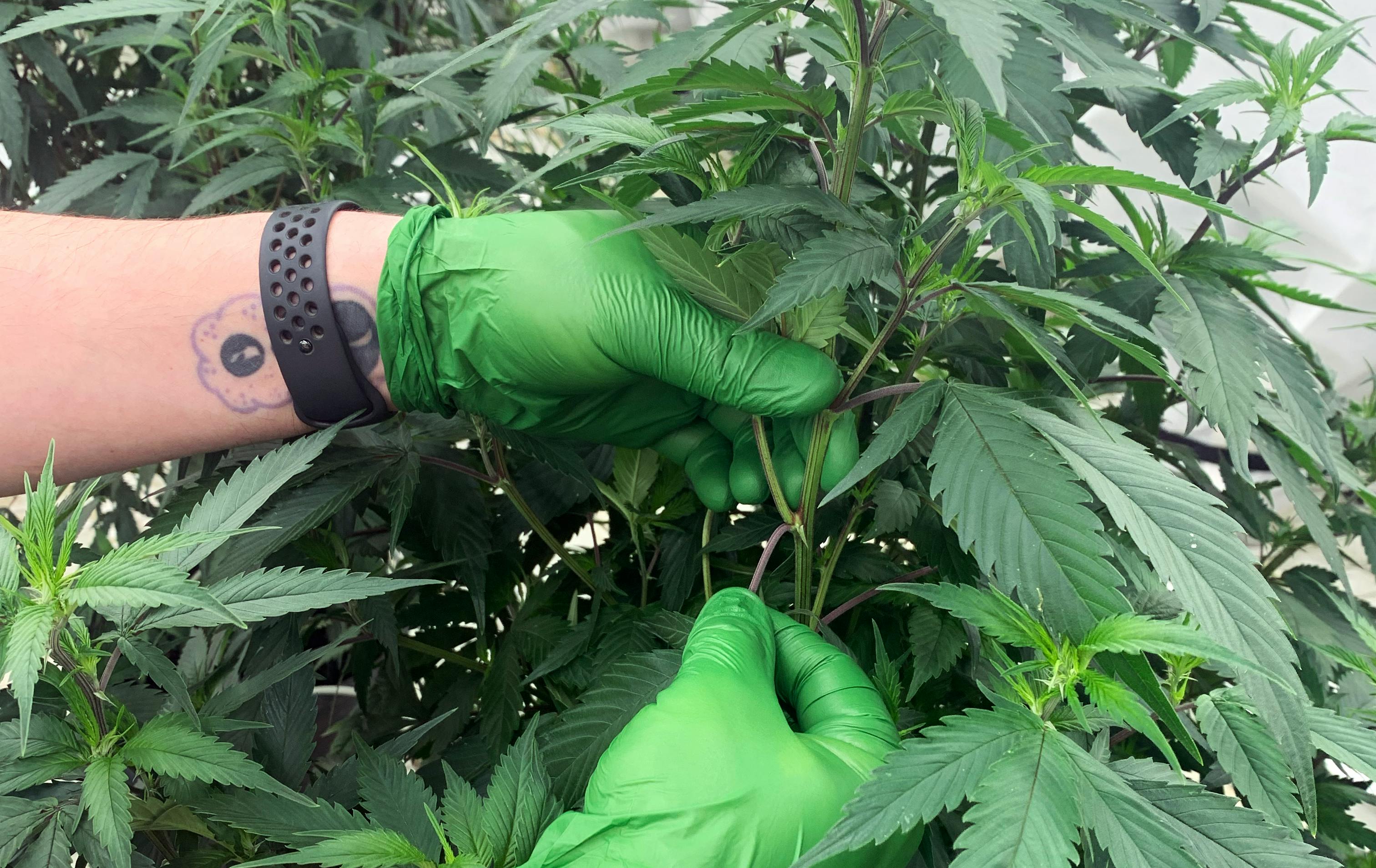A musing from our head cultivator, Jeremy Welter II.
Trimming fan leaves during the vegetative or flowering stage has long been used as a method to encourage airflow, increase light penetration, and ultimately increase flower health and quality. There is still a huge debate in the industry about what is the proper amount of removal–changing from grower to grower, facility to facility. Many things guide this decision including culture, history, pest pressures, environmental control capabilities (with or without facility input), planting density, etc.
At the end of the day, every grower in every facility considers what benefit is achieved each time the plant is touched. Every time a plant is touched, there is added input (labor or price of a product) which increases overall cost; this added cost should be outweighed by the benefit received from the action.
In the greenhouse: Optimizing for quality
At PPR [Phylos’ dedicated research and cultivation partner], we approach every decision with an analysis weighing the cost versus benefit. Leaves are pruned to maximize air flow within and through the canopy. This leaf removal increases light penetration to the interior canopy, but not to an extent that the photosynthetic ability is reduced or hindered.
A saying I have learned in the industry is, "When in doubt, leaf it on...."

Proper plant maintenance reduces disease and pest pressures within the canopy (reduces overlapping, dense canopy and microclimate development), which additionally increases pesticide application efficacy (improves coverage and penetration). While the benefits of pruning are attractive, it's important to strike a balance–excessive pruning can compromise photosynthetic capacity and stunt plant growth.
Photosynthetic powerhouses
Fully expanded, mature fan leaves absorb sunlight and carbon dioxide (coupled with water) to produce energy for cellular growth, making them the "solar panels" of the plant. They are the photosynthetic powerhouses or photosynthetic sources that feed not only the producing tissue, but also the plant sinks–tissues that do not have this luxury photosynthetic production including roots, flowers, fruits, seeds, and newly expanding leaves and stems.
Effective pruning–an art & a science
Effective pruning is essential for optimizing plant growth and can be realized after a cost-benefit analysis is taken into account. In summary, my top 4 tips are:
- Monitor plant growth regularly and remove fan leaves as needed to maintain airflow and light penetration.
- Prioritize the removal of damaged or diseased leaves to prevent the spread of pests and diseases.
- Consider facility restrictions, environmental factors, planting density, and labor availability when determining how much to prune.
- When in doubt, leaf it on.
With proper management, we can unlock the full potential of cannabis.
– Jeremy Welter II, Head Cultivator at Progressive Plant Research

Jeremy Welter II, Head Cultivator at Progressive Plant Research